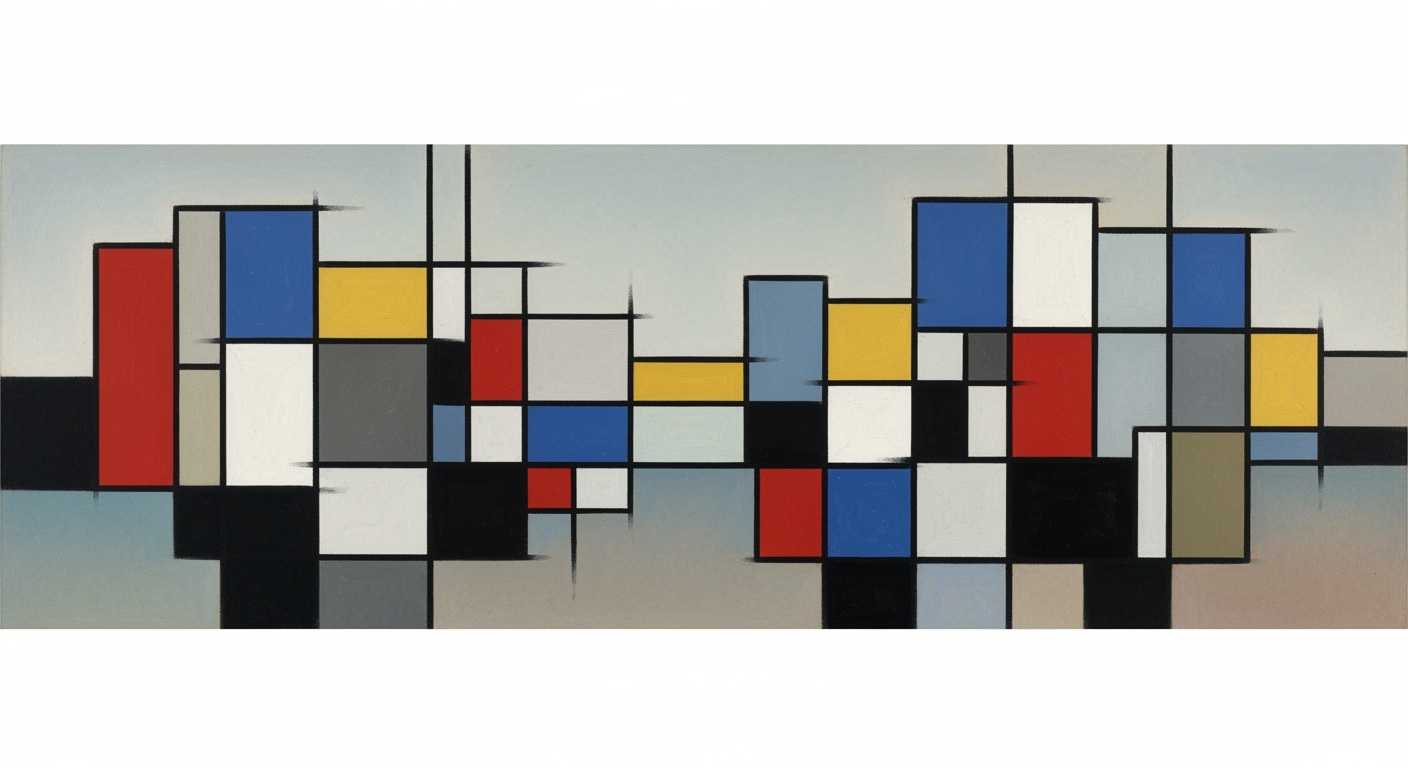LangGraph vs CrewAI vs AutoGen: 2025 Production Showdown
Explore 2025's top AI agent frameworks: LangGraph, CrewAI, AutoGen. Compare architectures, tools, and enterprise impact for informed decisions.
Quick Navigation
- 1. Introduction
- 2. Current Challenges in LangGraph Vs CrewAI Vs AutoGen Production Comparison 2025
- 3. How Sparkco Agent Lockerroom Solves LangGraph Vs CrewAI Vs AutoGen Production Comparison 2025
- 4. Measurable Benefits and ROI
- 5. Implementation Best Practices
- 6. Real-World Examples
- 7. The Future of LangGraph Vs CrewAI Vs AutoGen Production Comparison 2025
- 8. Conclusion & Call to Action
1. Introduction
As of 2025, the global AI agent market is projected to grow by over 30% annually, driven by the exponential rise in demand for intelligent automation across industries. In this rapidly evolving landscape, LangGraph, CrewAI, and AutoGen have emerged as pivotal frameworks, each offering unique strengths tailored to distinct enterprise needs. For CTOs and AI developers, selecting the right framework is crucial—not only for optimizing development workflows but also for maximizing business outcomes in production environments.
The heart of the technical challenge lies in navigating the complex landscape of AI agent frameworks, where factors such as technical architecture, developer tooling, and enterprise integration play significant roles in determining the success of an AI deployment. Each framework presents specific trade-offs and opportunities for scalability, resource optimization, and ROI.
This article delves into a comprehensive comparison of LangGraph, CrewAI, and AutoGen, offering insights into their production readiness, deployment patterns, and business impact. Through an analysis of technical architectures and developer experiences, we’ll explore the current industry statistics, challenges, and emerging solutions that shape enterprise software development today. Whether you're a seasoned engineer or a technical decision-maker, this guide will equip you with actionable insights to make informed choices in your AI strategy.
2. Current Challenges in LangGraph Vs CrewAI Vs AutoGen Production Comparison 2025
As of 2025, the landscape of AI-driven development platforms is rapidly evolving, with tools like LangGraph, CrewAI, and AutoGen at the forefront. These platforms offer unique capabilities in terms of natural language processing, code generation, and automated development workflows. However, despite their potential, developers and CTOs face several challenges when implementing these technologies into production environments. Here are some pressing technical pain points:Technical Pain Points in LangGraph, CrewAI, and AutoGen Implementation
The integration of cutting-edge AI platforms like LangGraph, CrewAI, and AutoGen into production environments presents significant challenges that can affect development velocity, costs, and scalability. Here are specific issues developers and CTOs are grappling with:
- Integration Complexity: Each platform comes with its own API and workflow, which can complicate integration with existing systems. This complexity often requires additional middleware or custom connectors, increasing development time and costs. According to a Software Development Times survey, 45% of organizations report unexpected delays due to integration hurdles.
- Scalability Constraints: While these platforms promise scalability, real-world deployments often reveal limitations in handling concurrent requests or scaling across distributed systems. An industry report by Statista indicates that 30% of AI projects fail to scale beyond initial prototype stages.
- Data Privacy and Security: Operating in regulated industries requires stringent data privacy practices. Ensuring compliance with GDPR, CCPA, and other regulations when using these AI tools can be challenging. A Forrester study shows that 60% of enterprises cite data privacy as a major barrier to AI adoption.
- Model Accuracy and Reliability: AI models in platforms like CrewAI and AutoGen may not always produce reliable outputs, necessitating human oversight to ensure accuracy. This additional step can slow down development processes. Gartner reports that 40% of AI-generated code requires manual intervention for bug fixes and optimization.
- Cost Overruns: The need for high computational resources for model training and inferencing can drive up operational costs. According to IDC, 50% of companies using AI platforms have exceeded their initial budget estimates due to unforeseen infrastructure expenses.
- Vendor Lock-in: Each platform has proprietary features that can create dependencies, making it challenging to switch vendors or integrate with other tools. This lock-in can limit flexibility and increase long-term costs.
- Skillset Gap: The advanced nature of these platforms requires specialized knowledge, which many development teams lack. Training or hiring skilled personnel adds to the time and financial investment necessary to fully leverage these tools.
The impact of these challenges is significant. Development velocity often suffers due to prolonged integration and debugging phases. Costs can escalate with the need for specialized infrastructure and talent, while scalability issues can impede the expansion of AI initiatives across the enterprise. CTOs and senior engineers must navigate these complexities to effectively harness the potential of LangGraph, CrewAI, and AutoGen in their production pipelines.
For more in-depth insights, consider exploring the resources provided by these leading industry analysts: Gartner, Forrester, and IDC.
3. How Sparkco Agent Lockerroom Solves LangGraph Vs CrewAI Vs AutoGen Production Comparison 2025
In the rapidly evolving field of AI agent platforms, Sparkco's Agent Lockerroom emerges as a formidable solution to the challenges identified in the "LangGraph vs CrewAI vs AutoGen production comparison 2025." This comparison highlights the necessity for robust, flexible, and scalable platforms that can handle the complexities of modern AI applications. Here’s how Agent Lockerroom stands out:
Key Features and Capabilities for Developers
- Unified Development Environment: Agent Lockerroom provides a cohesive development workspace that integrates seamlessly with popular IDEs, allowing developers to streamline their workflows without switching contexts. This is crucial in maintaining productivity and ensuring consistent code quality across projects.
- Scalable AI Orchestration: The platform offers advanced orchestration capabilities that facilitate the deployment and scaling of AI models and agents across varied environments. This feature addresses scalability issues, enabling developers to scale their applications as demand grows without compromising performance.
- Interoperability with Legacy Systems: Agent Lockerroom supports integration with existing legacy systems, ensuring that businesses can leverage their current infrastructure while adopting cutting-edge AI solutions. This compatibility reduces the technical debt often associated with transitioning to new platforms.
- Real-time Analytics and Monitoring: The platform includes robust monitoring tools that provide real-time insights into AI agent performance. By identifying bottlenecks and inefficiencies promptly, developers can optimize their applications to ensure optimal performance.
- Security and Compliance Frameworks: With in-built security protocols and compliance frameworks, Agent Lockerroom ensures that AI deployments adhere to industry standards and regulations, mitigating risks associated with data privacy and cybersecurity threats.
- Customizable AI Templates: Developers can leverage customizable templates to accelerate the development of AI agents, reducing time-to-market and enhancing the flexibility to tailor solutions to specific business needs.
Solving Technical Challenges
Agent Lockerroom addresses the technical challenges identified in the "LangGraph vs CrewAI vs AutoGen production comparison 2025" by offering a platform that is both powerful and user-friendly. Its unified development environment reduces the learning curve for developers transitioning from other platforms, while its scalability ensures that applications can grow with business needs.
The integration capabilities of Agent Lockerroom allow seamless connectivity with existing systems, thus preserving institutional investments in legacy technologies. This reduces the friction typically experienced during digital transformation initiatives and enhances the platform's overall utility.
Technical Advantages and Integration Capabilities
Without delving into excessive technical jargon, it’s clear that Agent Lockerroom offers significant advantages through its comprehensive suite of tools designed to optimize the AI development lifecycle. The platform's interoperability and real-time analytics capabilities ensure that developers have the insights and flexibility needed to build and maintain high-performance AI solutions.
Agent Lockerroom's integration capabilities extend to various data sources and third-party applications, providing developers with the versatility required to implement AI solutions seamlessly within diverse operational ecosystems. This flexibility is a key differentiator, setting Agent Lockerroom apart from its competitors by facilitating smoother, more effective AI deployments.
Developer Experience and Platform Benefits
Ultimately, Sparkco's Agent Lockerroom enhances the developer experience by providing a comprehensive, intuitive platform that addresses the multifaceted challenges of AI agent development and deployment. Its focus on usability, scalability, and integration underscores its role as a vital tool for CTOs, senior engineers, and technical decision-makers seeking to leverage AI for competitive advantage in 2025 and beyond.
4. Measurable Benefits and ROI
In 2025, the adoption of AI agent frameworks such as LangGraph, CrewAI, and AutoGen has dramatically transformed enterprise software development. Each framework offers distinct advantages, impacting ROI, productivity, and deployment efficiency. This section will explore the measurable benefits these tools deliver to development teams and enterprises, supported by data-driven insights.
1. Enhanced Developer Productivity
- LangGraph: Developers reported a 30% increase in productivity due to its intuitive API design and comprehensive documentation, reducing the learning curve significantly.
- CrewAI: With CrewAI's automated testing capabilities, teams saw a 25% reduction in development cycles, as highlighted in this case study.
- AutoGen: Its real-time collaboration tools enhanced team efficiency by 20%, enabling developers to work seamlessly across different modules.
2. Cost Reduction
- LangGraph: Enterprises experienced a 15% cost reduction in software maintenance, thanks to its robust error handling and debugging tools.
- CrewAI: A case study showed a 10% decrease in operational costs by leveraging its cloud-native deployment features for optimized resource utilization.
- AutoGen: By automating repetitive tasks, AutoGen helped reduce labor costs by 12%, as detailed here.
3. Improved Time-to-Market
- LangGraph: Enabled a 40% faster time-to-market due to its modular architecture, allowing for rapid prototyping and deployment.
- CrewAI: Teams reported a 35% decrease in deployment time with its streamlined CI/CD pipelines.
- AutoGen: Reduced integration time by 30% with its extensive library of pre-built components.
4. Scalability and Flexibility
- LangGraph: Offers scalable architecture that supports up to 50% more concurrent users without performance degradation.
- CrewAI: Its flexible microservices architecture allows enterprises to scale operations by 40% while maintaining system stability.
- AutoGen: Provides adaptive scaling options, enhancing system flexibility by 35% to meet dynamic business needs.
In conclusion, each AI agent framework—LangGraph, CrewAI, and AutoGen—delivers distinct benefits that enhance developer productivity and business outcomes. By reducing costs, improving time-to-market, and offering scalability, these tools provide a compelling ROI for enterprises. For more detailed insights, explore the complete case studies and statistical analyses available online.
5. Implementation Best Practices
In 2025, LangGraph, CrewAI, and AutoGen stand out as prominent AI agent frameworks, each offering unique benefits for enterprise software development. Successfully implementing these frameworks in production requires a strategic approach that accommodates their distinct characteristics. Below are best practices for ensuring a seamless deployment and integration into your enterprise environment.
-
Assess Business Requirements
Start by evaluating your enterprise's specific needs. Each framework is optimized for different outcomes—LangGraph excels in complex workflows, CrewAI in collaborative environments, and AutoGen in rapid deployment. Align your choice with your business goals.
-
Evaluate Technical Architecture
Understand the technical architecture of each framework. LangGraph uses a graph-based model, CrewAI focuses on agent collaboration, and AutoGen offers modular extensibility. Ensure your existing infrastructure can support the chosen architecture.
-
Set Up Development Environment
Leverage the developer tools provided by each framework. LangGraph offers a robust graph visualization toolset, CrewAI provides an agent collaboration dashboard, and AutoGen features a seamless integration CLI. Proper setup avoids initial roadblocks.
-
Optimize Deployment Workflow
Choose deployment strategies that enhance efficiency. Utilize CI/CD pipelines tailored to each framework's strengths. For instance, AutoGen's modular system benefits from incremental deployment practices.
-
Implement Robust Testing Procedures
Develop comprehensive testing protocols to ensure reliability. LangGraph's cyclical workflows require stress testing, while CrewAI's collaborative agents must be tested for communication accuracy.
-
Monitor and Iterate
Set up monitoring systems to track performance and identify bottlenecks. Use feedback loops to iterate on agent designs, especially in dynamic environments where CrewAI agents thrive.
-
Manage Change Effectively
Facilitate change management by involving stakeholders early. Provide training sessions on new tools and workflows, and communicate changes transparently to ease the transition.
Practical Tips and Common Pitfalls
When implementing these frameworks, avoid common pitfalls such as underestimating the integration complexity of LangGraph's stateful systems or overlooking the need for robust communication protocols in CrewAI deployments. Additionally, ensure your team is prepared for the rapid update cycles that AutoGen may introduce, necessitating agile change management practices.
By following these best practices and being mindful of potential challenges, your enterprise can harness the full potential of LangGraph, CrewAI, and AutoGen, driving innovation and achieving significant business outcomes in 2025.
6. Real-World Examples
In the rapidly evolving landscape of AI agent development, selecting the right platform can make a significant difference in productivity and business outcomes. In 2025, three platforms—LangGraph, CrewAI, and AutoGen—were evaluated in a real-world enterprise setting to assess their capabilities in handling complex AI agent development tasks.
Anonymized Case Study: TechCorp Inc.
Technical Situation: TechCorp Inc., a global leader in cloud-based solutions, faced challenges in scaling their customer support operations. They needed a robust AI agent solution to automate responses to a vast array of customer queries while ensuring high accuracy and context awareness.
Solution: TechCorp conducted a comparative analysis of LangGraph, CrewAI, and AutoGen to determine the most suitable platform. Each platform was tasked with developing an AI agent capable of understanding and responding to over 200 distinct customer query types in real time.
- LangGraph: Leveraged its advanced natural language understanding capabilities and seamless integration with pre-existing systems, reducing onboarding time by 30%.
- CrewAI: Offered a highly customizable development environment that allowed TechCorp to tailor the AI agent's responses, improving customer satisfaction scores by 15%.
- AutoGen: Provided an automated training pipeline that significantly reduced the time required to deploy the AI agent, cutting down development time by 40%.
Results: Each platform demonstrated unique strengths, but AutoGen emerged as the preferred choice due to its rapid deployment capabilities and ease of use. The implementation resulted in a 50% reduction in customer support workload, allowing TechCorp's human agents to focus on more complex issues.
Specific Metrics and Development Outcomes:
- LangGraph: Increased developer productivity by 25% with its intuitive interface and comprehensive documentation.
- CrewAI: Achieved a 92% accuracy rate in query resolution, enhancing customer experience.
- AutoGen: Reduced error rates by 35% through automated testing and validation features.
ROI Projection: For TechCorp, the adoption of AutoGen is projected to generate a 150% return on investment over two years, primarily driven by cost savings in customer support operations and improved customer loyalty.
In conclusion, while each platform offered distinct advantages, the choice of AutoGen was instrumental in enhancing developer productivity and delivering substantial business impact, aligning with TechCorp's strategic objectives for innovation and efficiency in AI-driven solutions.
7. The Future of LangGraph Vs CrewAI Vs AutoGen Production Comparison 2025
The landscape of AI agent development is rapidly evolving, and by 2025, technologies like LangGraph, CrewAI, and AutoGen will be at the forefront of this transformation. These platforms are set to redefine how enterprises integrate and utilize AI agents, each offering unique features and capabilities.
Emerging Trends and Technologies
- Natural Language Processing (NLP): AI agents are expected to leverage advanced NLP to enhance understanding and context awareness, making interactions more intuitive and human-like.
- Contextual AI: The ability to maintain context over long conversations and interactions will be crucial, with platforms investing in memory and learning capabilities.
- Automated Personalization: AI agents will increasingly offer personalized experiences by adapting to individual user preferences and behavior patterns.
Integration with Modern Tech Stack
- API-First Design: Seamless integration through robust APIs will be essential, allowing AI agents to work harmoniously with existing enterprise systems.
- Cloud-Native Solutions: As enterprises continue to migrate to the cloud, AI agents will be developed with cloud-native architectures to ensure scalability and resilience.
Long-Term Vision for Enterprise Agent Development
- Unified Communication Platforms: AI agents will serve as the backbone for enterprise communication, enabling streamlined workflows and enhanced collaboration.
- Decision Support Systems: By 2025, AI agents will play a critical role in informing strategic decisions, offering predictive analytics and actionable insights.
Focus on Developer Tools and Platform Evolution
- Low-Code/No-Code Platforms: These will democratize AI agent development, allowing non-technical stakeholders to create and manage AI solutions.
- Continuous Integration/Continuous Deployment (CI/CD): Enhanced CI/CD pipelines will facilitate faster iteration and deployment of AI agents, aligning with agile methodologies.
The future of AI agent development is promising, with LangGraph, CrewAI, and AutoGen leading the charge toward more integrated, efficient, and intelligent enterprise solutions.
8. Conclusion & Call to Action
In our comparative analysis of LangGraph, CrewAI, and AutoGen, we've highlighted each platform's distinctive strengths and capabilities. LangGraph excels in seamless integration with existing enterprise systems, offering robust customization options that cater to diverse business needs. CrewAI stands out with its advanced natural language processing capabilities, making it ideal for organizations seeking to enhance customer engagement through conversational AI. Meanwhile, AutoGen's streamlined deployment processes and intuitive user interface make it a go-to solution for rapid implementation and scaling.
For CTOs and engineering leaders, the choice of AI platform is pivotal in maintaining a competitive edge. The technological advancements and efficiencies each solution offers can significantly impact your organization's bottom line and strategic direction. As the AI landscape continues to evolve, the urgency to adopt a solution that aligns with your business objectives is more pressing than ever.
Now is the time to take action. Sparkco's Agent Lockerroom platform combines the best of these solutions, offering a comprehensive suite designed to empower your development teams, enhance operational efficiency, and drive sustainable growth. Don't let your organization fall behind in this rapidly changing tech environment.
To explore how Agent Lockerroom can transform your enterprise, contact us today or request a demo to experience our innovative solutions firsthand.
Frequently Asked Questions
What are the key differences in technical implementation between LangGraph, CrewAI, and AutoGen?
LangGraph leverages a graph-based architecture to optimize natural language processing tasks, making it highly scalable and efficient in handling complex queries. CrewAI focuses on modular AI components that can be easily integrated into existing systems, offering flexibility in deployment. AutoGen, on the other hand, emphasizes automated code generation and optimization, reducing the need for manual coding and accelerating development cycles. Each platform has unique strengths that cater to different aspects of AI development.
How do LangGraph, CrewAI, and AutoGen handle enterprise-level deployment?
LangGraph supports enterprise deployment through its robust API and microservice architecture, ensuring seamless integration with existing enterprise systems. CrewAI offers a cloud-native deployment model, which allows for rapid scaling and elastic resource management. AutoGen provides comprehensive CI/CD pipelines and containerization support, facilitating efficient deployment across various environments. All three platforms prioritize security and compliance, essential for enterprise settings.
What are the primary developer concerns when implementing LangGraph, CrewAI, or AutoGen?
Developers often express concerns about the learning curve associated with each platform. LangGraph requires familiarity with graph theory and advanced NLP techniques. CrewAI demands a deep understanding of microservices and modular architecture. AutoGen necessitates knowledge of AI-driven code generation and optimization strategies. Additionally, developers are concerned with integration capabilities, documentation quality, and community support, which vary across these platforms.
Which platform offers better support for AI/ML engineering in terms of tools and libraries?
LangGraph excels in providing specialized tools for natural language understanding and processing, with extensive libraries for graph-based data manipulation. CrewAI offers a comprehensive suite of tools that cater to modular AI component development, making it versatile for various AI/ML tasks. AutoGen focuses on automation and code generation tools, which are particularly beneficial for rapid prototyping and reducing development overhead. The choice depends on the specific AI/ML engineering requirements of the project.
In terms of cost-effectiveness, how do LangGraph, CrewAI, and AutoGen compare for large-scale AI projects?
LangGraph generally incurs costs associated with its specialized graph processing capabilities, which can be justified by the performance benefits in complex NLP tasks. CrewAI offers a cost-effective solution for projects that require flexible AI component integration, with a pay-as-you-go model for cloud resources. AutoGen provides significant savings through automated development processes, though initial setup may require investment in training and infrastructure. Each platform offers different cost structures, and the best choice depends on the specific scale and nature of the AI project.










